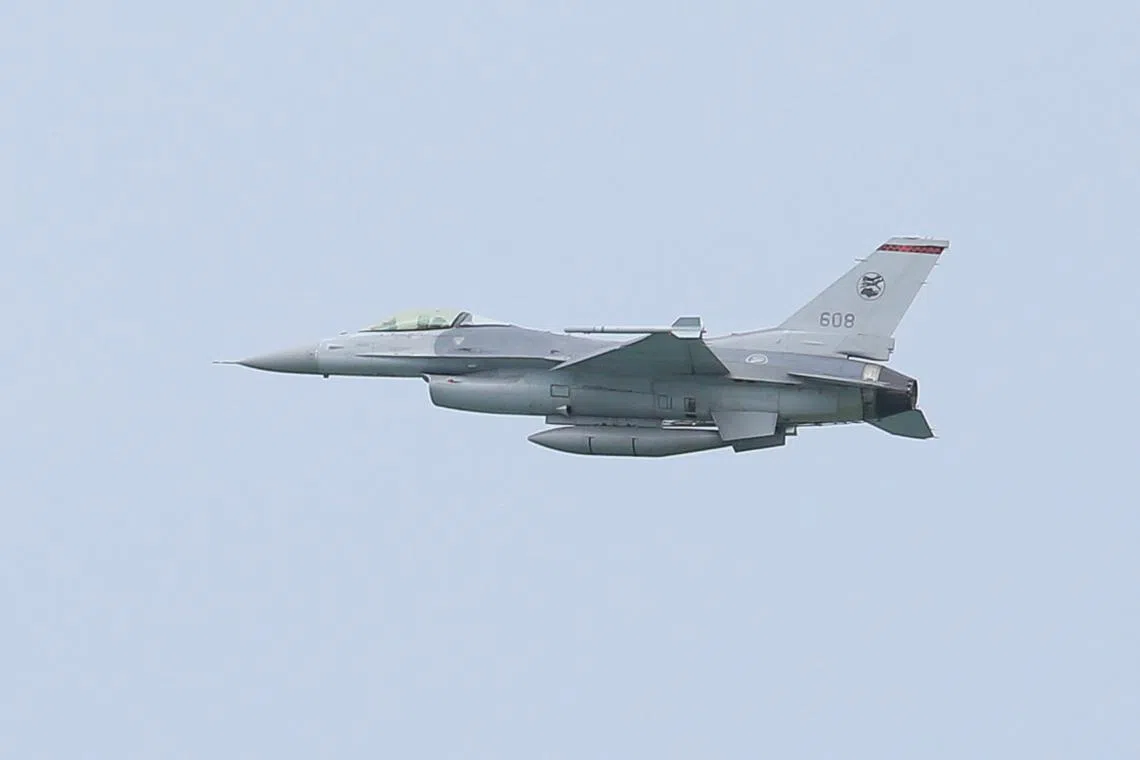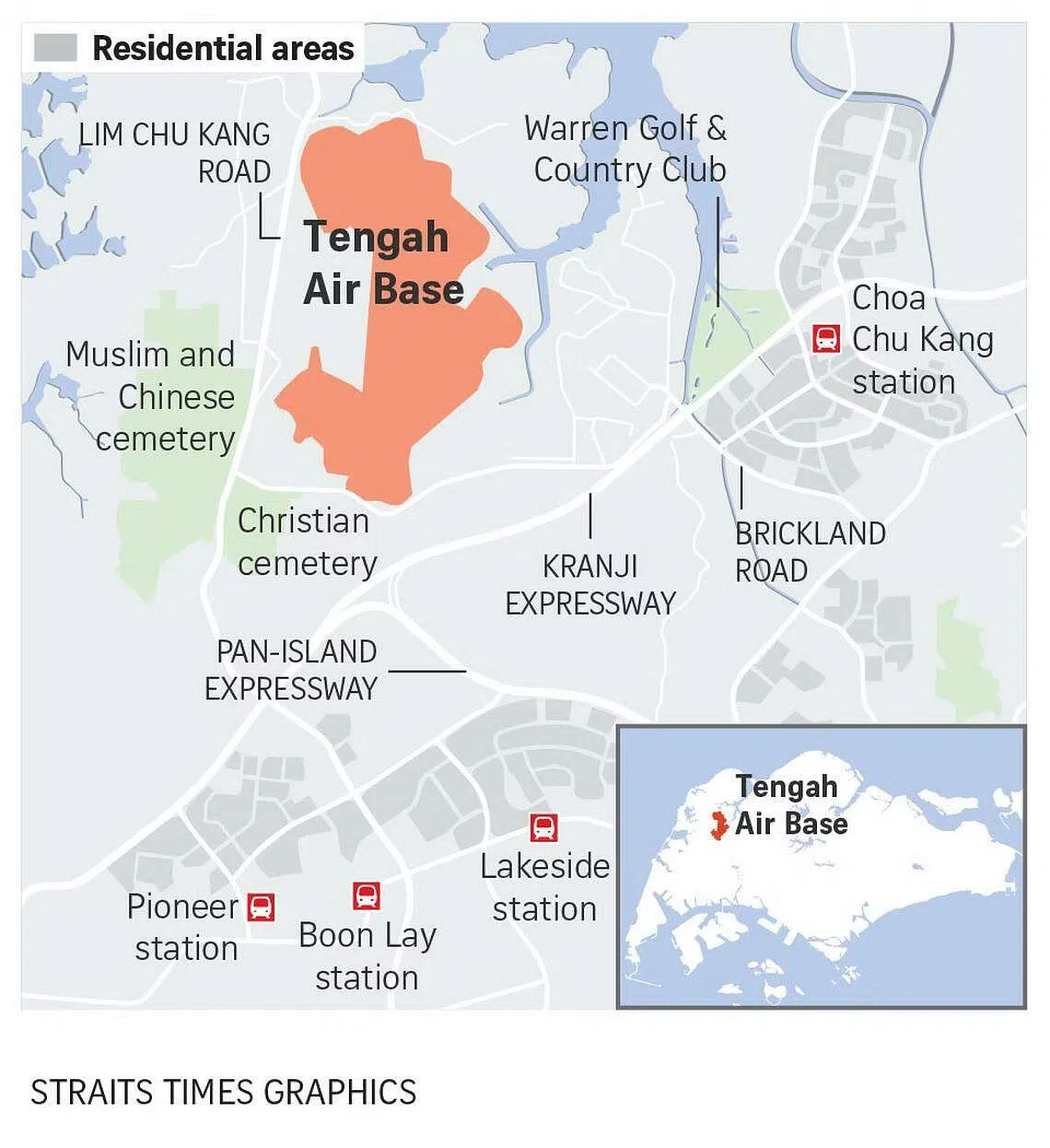askST: How did rare multiple failure of a crucial component lead to F-16 crash in Tengah?
Sign up now: Get ST's newsletters delivered to your inbox

An F-16 crashed inside Tengah Air Base as it took off for a routine afternoon training mission on May 8.
PHOTO: ST FILE
Follow topic:
SINGAPORE – The Republic of Singapore Air Force (RSAF) has cleared its F-16 fighter jets to resume flying after identifying the reason behind a crash in early May.
An F-16 jet crashed inside Tengah Air Base
The Ministry of Defence (Mindef) said on May 18 that the aircraft’s flight data recorder showed that erroneous inputs from its pitch rate gyroscopes – a component crucial for flight control – led to the crash.
The pilot of the F-16C single-seat fighter jet reported encountering flight control issues. He responded in accordance with emergency procedures and successfully ejected from the aircraft.
The ministry said the pilot suffered slight injuries and was taken to hospital for observation, while no one was injured on the ground.
Following the crash, the fleet of F-16s was grounded while the investigation was conducted.
The F-16s were cleared to resume flying on May 18 after checks were completed.
The Straits Times spoke to a number of former RSAF F-16 pilots and engineers introduced by Mindef, as well as an experienced defence source, to find out more about how the failure of the pitch rate gyroscopes contributed to the crash.
1. What is a pitch rate gyroscope?
Former RSAF pilot Ong Swee Chuan said the component, which is used in most modern aircraft, determines if the plane is pointing up or down and sends that data to the flight control computer.
Mindef said the F-16 is fitted with four such gyroscopes for redundancy – to guard against failures.
Mr Sim Peng Shin, another former RSAF F-16 pilot, said these gyroscopes are an integral part of the aircraft’s flight control computer, which receives pilot input on the control joystick and rudder pedals and translates it into the desired manoeuvres without causing loss of control.

2. What happened in the lead-up to the crash?
Mr Sim said, based on the RSAF’s internal reports and his conversations with the pilot involved, the flight control problem started when the aircraft was about 20m to 30m off the ground and travelling at around 250kmh to 300kmh immediately after take-off.
The issue caused a severe lag in the aircraft’s response to the pilot’s control input.
Mr Sim likened the situation to a car that does not immediately respond to steering input. This results in the driver turning the steering wheel more, only for the car to suddenly turn too much.
The driver then attempts to correct by turning the car in the other direction, but the car again does not immediately respond – leading to a cycle of oversteering and overcorrection.
“Every time you do this, the amplitude of the turn gets greater and greater. So this is kind of what happened to the plane, except that it was in pitch (aircraft’s nose oscillating up and down).”
3. How common are pitch rate gyroscope failures?
Mindef said having more than one failed gyroscope was a very rare occurrence.
Mr Sim agreed, saying the component is very robust.
He added that two of the four gyroscopes failed and that the flight control computer took its pitch data from them instead of the two working ones.
“Having two gyroscopes fail at the same time is very rare. Having both fail at the same time right at take-off is extremely rare.”
Mr Sim added that he had never heard of a double gyroscope failure despite having flown the F-16 from 1997 to 2023, and interacting with other air forces operating the plane during that time.
However, a source who was previously in a senior position in Singapore’s defence sector said he knew of at least three occasions when such a failure was experienced by foreign F-16 operators.
The F-16 is one of the world’s most widely used modern fighter jets and is currently flown by 25 air forces around the world, with more than 4,600 produced since 1976.
4. How are pitch rate gyroscopes maintained?
Mindef said F-16 manufacturer Lockheed Martin does not stipulate any maintenance for the component as the jets are fitted with four.
Former RSAF engineer Lee Sy Teck said the performance of the gyroscopes is monitored by the aircraft’s own diagnostic systems. If an abnormality is detected, it would be recorded for the ground crew’s attention during regular checks.
He added that the various gyroscopes come in an assembly that is known as a line replaceable unit.
Such units are modular components of an aircraft that can be quickly removed and replaced to minimise downtime for maintenance, resulting in better aircraft serviceability.


